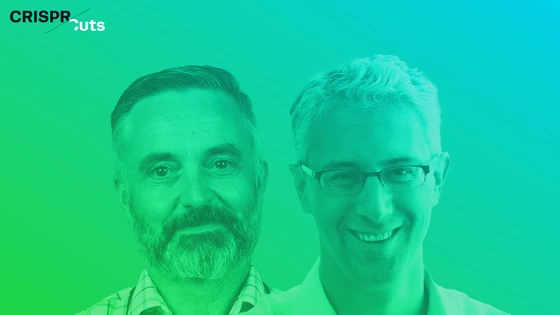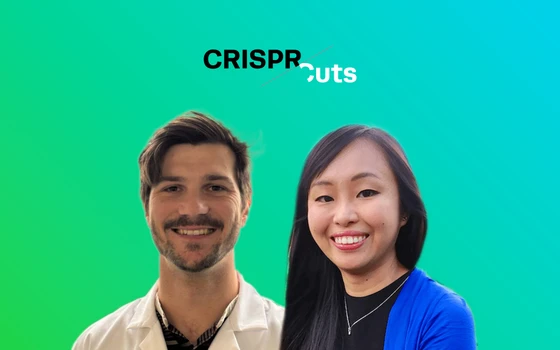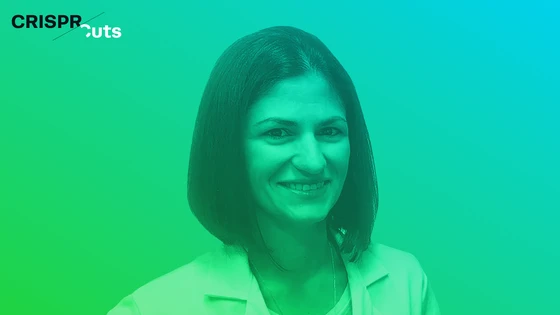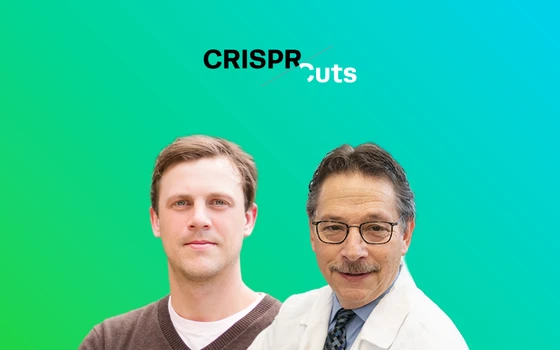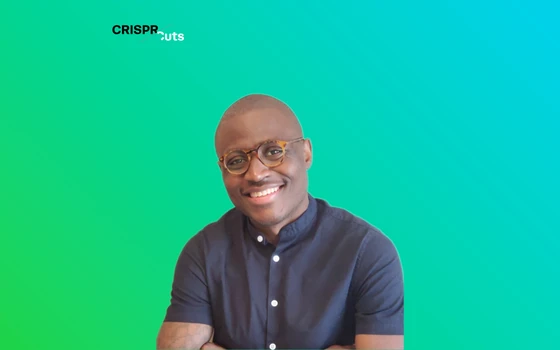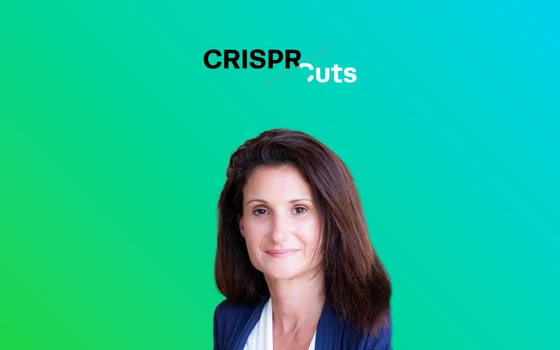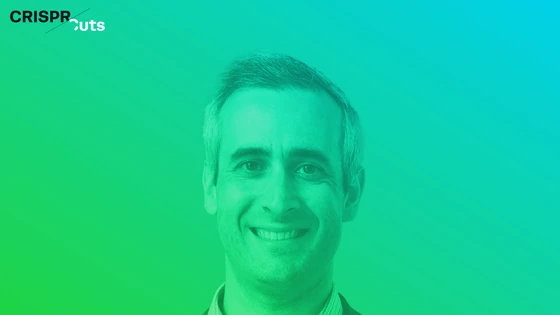Industrialized CRISPR iPS Cells Enable NIH Large Scale Alzheimer’s Disease Research Effort

Contents
In an article published in the journal Neuron, National Institutes of Health (NIH) researchers outlined their plans for the iNDI project. The Induced Pluripotent Stem Cell Neurodegenerative Disease Initiative (iNDI) is an ambitious project that will model more than 100 mutations associated with Alzheimer’s disease and related dementia (ADRD) in isogenic induced pluripotent stem cell (iPSC) lines. When implemented, iNDI will be the largest ever iPSC genome engineering project. It will create a library of hundreds of disease models with standardized iPS cell lines carrying ADRD relevant mutations.
The NIH initiated the iNDI project, and Synthego is proud to enable it with the Eclipse™ Platform. Leveraging Synthego’s CRISPR expertise, we delivered 264 iPSC cell clones with 12 variants per gene across 22 targets. Synthego took on this challenge by harnessing the high-throughput capabilities of the Eclipse Platform to CRISPR edit iPSCs at scale. This allowed us to edit iPSCs in parallel, enabling the rapid generation of clones within just a few months.
In this week’s episode of our CRISPR Cuts podcast, we converse with the principal investigators of this project, Dr. Mark R. Cookson, senior investigator in the NIA’s Laboratory of Neurogenetics, and Dr. Michael E. Ward, an investigator in the Inherited Neurodegenerative Diseases Unit of the National Institute of Neurological Disorders and Stroke (NINDS), about this project.
Check out the podcast episode, and read the summary below.
The NIH iNDI Project: Inception and Current Developments
Minu: Could you elaborate on what the iNDI project does?
Michael: My lab focuses on how the basic mechanisms of these mutations drive neurodegenerative diseases. We have gravitated towards stem cells as a model to study the cell biology of these gene mutations simply because stem cells can differentiate into almost any disease-relevant subtypes ranging from neurons to muscle cells. This has proven to be a super powerful tool with the advent of CRISPR-Cas9 genome engineering.
Now, we can either take a stem cell line from a patient and make a significant control group by correcting the mutation or introduce disease-associated mutations into the stem cell lines to create a perfectly matched isogenic series.
iNDI uses the latter strategy, and it’s been really neat to have an academic lab focus on these mechanisms and then weave it into an initiative that will generate tools and data sets to enable global research down the road.
Mark: For me, this is the genesis of iNDI- we need to stop worrying about what genes, phenotypes, and diseases are called and start thinking about creating a scale across all of them. The only way I think we can rigorously do this is to start from a set of consistent, well-behaved iPSC lines and look at them all equivalently. That is, cross-check whether phenotypes at the cellular levels match with our established gene labels. I suspect we will find interesting results.
So, let me give you an example. One of the most substantial risk factors for Alzheimer's disease is the APOE allele. So, APOE2 is a protective factor, APOE3 is neutral, and APOE4 is a risk factor. If you have an APOE4 homozygote, you have a much higher risk of getting Alzheimer's disease. However, in a recent GWAS (Genome-Wide Association Studies) project that my lab was involved in, led by Sonja Scholz at NINDS, APOE4 is also a risk factor for Lewy body dementia. The difference between Alzheimer's and Lewy body dementia is not trivial, both from the pathology and the symptomatology. So, that says that one gene can be associated with multiple outcomes.
Another example of this would be the C9ORF72 expansion mutations, which Bryan Traynor found. Those can be in the same family, either of frontotemporal dementia or ALS. What we call disease is usually, it's either something to do with the history, or how it was found, where the symptoms are located in neuroanatomical, or something about pathology. But that isn't necessarily what biology is telling us; biology might be telling us that groups of genes are more similar than the names we use to describe the diseases may indicate.
Michael: In medicine, we usually say, ‘pathologists have the final word,’ I wonder if this should be modified to ‘geneticists always have the final word.’
Talking about how we need to move beyond traditional nomenclatures to study genetic similarities between unlikely neurodegenerative diseases, Dr. Ward elaborates-
"This artificial siloing of diseases has hindered progress and cross-fertilization between fields. So iNDI is one project that can potentially help break down some of those barriers, and potentially seed new ideas. This can also potentially drive new therapies as it is truly cross-cutting. "
Challenges of Scaling CRISPR in iPSCs and the iNDI Solution
Minu: A project like iNDI hasn’t been undertaken before. What were the main challenges that you have faced so far? Has CRISPR improved the ability to make these models?
Michael: I think the time is right technologically to do this because of the real advancements in stem cell biology and CRISPR research. The more significant hurdle has been organizing and funding a project that doesn’t really fall into a category that a single academic lab would do. It is something that hasn't necessarily worked so well under traditional extramural funding mechanisms.
We think that all of these techniques will generate data that will be usable. But, we recognize there are many other things that we're not looking at here. We have not yet explored metabolic profiles, glial cells, and cell-to-cell interactions.
Mark: In our lab, we started with a small-scale project; some of the things we found out along the way were that it's actually hard to do some edits. It's hard to make sure that you don't have off-target effects. It's hard to make sure that you don't lose isogenicity by the acquisition of chromosomal regions. You can very easily have what looks like a homozygous edit, whereas in fact, what you've done is that you've edited one allele and lost the other, so you get loss of heterozygosity at the locus itself. It was a lot of effort to edit just one gene.
We've had several partners on this, the Jackson Laboratory, Synthego, and Thermo (Thermo Fisher Scientific), all doing some edits and keeping it organized. I think we've picked well. We’ve got people who knew what they were doing competently. It's timing, technology, and people, of which I'd say, the most important is the people.
"We're very fortunate to be associated with The Center for Alzheimer's and Related Dementias, a new NIH effort. Alzheimer's and related dementias will be one of the biggest reasons people will die in the next century. Most importantly, our focus was to move away from small-scale editing and go big with iNDI. CRISPR technology has matured simultaneously and can be scaled up and built out. I think that's driven our ability to do this at scale. "
Standardization of CRISPR Editing and the Future of Neurodegenerative Diseases
Minu: Synthego contributed CRISPR-edited cell lines in a very standardized way with the help of the Eclipse Platform for this project. Can you speak a little bit more on what this standardization would mean for the field and how these standardized models would shape the future of neurodegenerative diseases?
Michael: Our field recognized that there could be target mutations and deletions that mimic what appears to be a homozygous edit, where one allele contains the engineered variant, and the other allele seems to have the same edit. But in actuality, there was a large deletion that prevented primer bonding. Therefore, that deleted allele wasn't seen on the Sanger sequencing. It scares me to think about how many cell lines are in use right now by labs that have tremendous phenotypes because they deleted a multi-kilobase region in one of the edited alleles.
To ensure overall quality control, we are using what we call “trio” sets. A “trio” set would be composed of the parental line, the mutant line, and the revertant line. In addition to Sanger sequencing, X-ray-based karyotyping, G-band karyotyping is conducted for the lead clones. We’re conducting whole genotype sequencing (WGS) for the lead clones post-editing, and then we're generating a fascinating new tool, a revertant line. In a revertant line, we'll take a mutant line and then correct that mutation back to the wild type genotype with the notion that if anything happened during the editing that maybe we'd been missing in the quality control, that we should build a fallback because that revertant line should look like the parental, unedited, wild type cell line.
Finally, the investigator could experiment with just three cell lines with the confidence that the phenotype is related to the mutation, not something else that happened during the editing and expansion process.
Investigators want to get to experimentation as quickly as they can. This additional control line isn't feasible for most groups, but with a well-organized project like iNDI, this can be used as a reliable reference set.
Mark: None of this is meant to take away from anything that anyone else is doing. Hopefully, what we've done is we've put really good cell lines in, we've kept an eye on the quality control, and that when we release them into the public space, they'll continue to behave as we expect. I will say that we're not simply throwing cell lines out there. We should be able to provide all of that information, protocols, and data, allowing people to use this as a benchmark.
The iNDI Project Timeline
Minu: Could you describe a feasible timeline for the rollout of this project?
Michael: I hate to overpromise here. What I can say is that the majority of the lines on the first parental background, in terms of the mutant lines, have now been generated and validated with Sanger sequencing. But, we are waiting on all of those quality control assays before we are able to then release those lines, generally, to the public. We're very excited by the fact that it appears that we've successfully edited these. So, it should be soon.
Minu: What would be the best-case scenario of when these lines would be ready for the community?
Mark: The first phase is engineering and generation, and we're quite a way through that. It looks like it's going to be largely successful. We'll measure success by how the neurodegenerative disease community takes that up. The initial data looks good.
In the second phase, we characterize the baseline biology of disease-relevant subtype cells such as neurons using various genomic platforms, ultimately creating a data repository of cellular phenotypes for investigators worldwide.
Timeline-wise, ideally by early 2022, we should have a really good set of cell lines available for people. At that point, we'll also start to generate some of the associated data sets that we've planned. So far, we've been pretty on track, despite a global pandemic, so I'm somewhat confident that we'll be able to do it.
Michael: For phase two of the foundational data set generation, we've picked a very easy to generate neuron model by overexpression of a transcription factor, Neurogenin 2. It is incredibly reliable and robust, and we've chosen several different phenotypic readouts that we think are shovel-ready.
Future of Scientific Collaboration in Neurodegenerative Diseases
Minu: Mark, I would like to ask you about your recent paper where you had modeled 14 isogenic lines, looking at Parkinson's- are you also looking to make those cell lines available for other labs?
Mark: They are made available to other labs. It was very straightforward and very non-restrictive. In terms of what we expect, we would love to hear back from people about these cell lines- if they behaved as expected or not. I think the only restriction we would prefer is that people don't redistribute the lines. That's less for academic reasons and more for a scientific purpose; one of the dangers of iPSCs is that they acquire somatic mutations.
Minu: After phase 2, are there other projects in the pipeline on a similar scale or something that's being worked on right now?
Michael: I think one of the things that I'm proud of is how we have structured iNDI so far- it can act as a framework or platform, even for other groups to potentially engineer other mutations that might fall outside of ADRD.
While iNDI will store the open-source data, the Jackson Laboratory will distribute the final iPSC lines. This Herculean initiative will yield an invaluable source of neuropathological data to the larger research community for years to come and lay the foundation for the next CRISPR revolution.
Synthego will continue to leverage the immense potential of CRISPR editing at scale through the Eclipse Platform to generate standardized engineered cell models. These cell models will enable the study of gene interactions and gene-disease linkages to understand better how to treat a myriad of genetic diseases.
